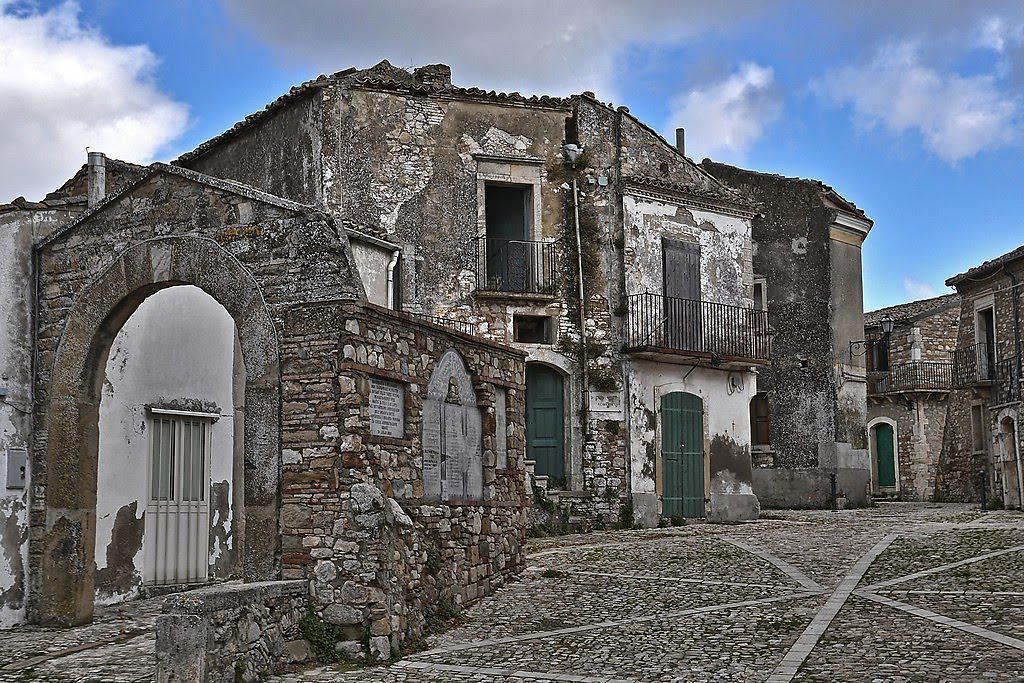Developed around the temple in honor of the goddess Eca (Acca Dia, hence the name), Accadia is one of the most characteristic villages of the Dauno Subappennino, located at 650 meters above sea level, nestling among the hills, immersed in the lush green of its centuries-old woods. Enchanting village, well connected, it is located close to the Campania border, a short distance from Bovino and Ascoli Satriano and less than 50 km from Foggia. Although it was admitted to the province of Foggia only in 1927 - it boasts very ancient origins, as demonstrated by the Rione Fossi, an ancient medieval citadel, located in the heart of the town which largely retains its original appearance. What makes it unique is a mosaic of caves, some of which are prehistoric, and ancient houses that are currently being developed. In Roman times it was an important place of worship, full of temples and inhabited by numerous priests; in medieval times, however, it was a stronghold designed precisely to guard the treasures hidden in the temples. The medieval core of Accadia was abandoned following the 1930 earthquake. Following the Irpinia earthquake, the inhabitants left the Rione Fossi and moved to the lower areas of the hill. This small ghost village where time seems to have stopped and everything hovers in a dimension of eternal present is characterized by narrow streets, winding alleys, ancient medieval houses and the remains of small churches, the oldest part of the Fossi district develops on the rocky side, with houses dug into the rock such as those that rise between the characteristic Sassi of Matera. Inside the village you can admire the remains of the Ducal Palace. Next to the ancient Arco di Porta di Capo, which was once the gateway to the village, there is a small square named after Chancellor Ranuccio Zannella, heroic defender of Accadia during the siege of 1462.
All is silent, dominates the abandonment and the vegetation between the ancient white stone houses and the snail-shaped streets. An evocative atmosphere, almost like a fascinating and overwhelming film. Between the entrance to the ancient village called Arco di Porta di Capo and the nineteenth-century Monumental Fountain with the coat of arms of Accadia (which looks like a miniature Pantheon), sentinel of the homonymous square stands the Clock Tower, built in 1883 delimits together with the monumental fountain piazza Ferro, built in hammered stone and colored bricks, is 12 meters high and 6 meters wide. Partially destroyed by the Aragonese siege of 1462, while on 8 December 1954 a Madonna was placed to protect the entire town. museum activity and more. Moving a few meters, at the beginning of Via Borgo, stands the Civic Museum of Accadia, in the sixteenth-century Palazzo Vassalli, whose facade has a beautiful loggia with arches, transformed in 1999 into a small but rich container of ancient and medieval finds, as well as that of objects of the peasant and artisan tradition. The museum is divided into four rooms. In the hall of the Civic Museum, initiatives related to museum activities and more are periodically organized. In the Rotato valley, there are the remains of a Roman tavern, which testifies to the Roman presence in the area from the discovery of numerous archaeological finds. Among the mountains of Daunia, in the municipal area of Accadia, along the southern slopes of Monte Crispignano at an altitude of 1039 meters above sea level. the Sanctuary of the Madonna del Carmine is located where according to tradition, on the summit of the mountain the Madonna appeared in a cleft in the rock to a shepherd boy between 1200 and 1300. Giuseppe Recco, Duke of Accadia, was responsible for the construction of the chapel in 1694 and the donation of the marble bas-relief depicting the Madonna and child.
Just look out from the Belvedere in Piazza Matteotti, to find yourself in front of the landscape of the Subappennino Dauno, a paradise of water sources, outcropping rocks and expanses of green between Bosco Paduli and the Gorges of Accadia, where you can stop for a picnic in the shade of the ancient oaks. Bosco Paduli is located about 5 km from Accadia, towards Deliceto and is part of the "Accadia - Deliceto" area of Community interest. The area is characterized by the presence of numerous centuries-old tree specimens, in particular in the central area of the wood where a large clearing opens up where the final concert of the Accadia Blues Festival takes place, which usually takes place every third Sunday in July. The naturalistic area offers the opportunity to carry out various activities, such as trekking and horseback riding, thanks to the network of equipped paths. The Gorges of Accadia, also known as Gorges of Pietra di Punta, can be reached on foot from the village of the same name, following a path and being guided by local experts. Recognized as a protected area, it is truly an uncontaminated landscape that presents itself to the hiker visitor as it once was, that is wild and primitive, the gorges appear as two steep and white limestone walls, which come out of the valley of the Frugno stream; hidden among the vegetation of the gorges there is also a beautiful lake. In addition to the surrounding landscape that captivates at first glance, do not miss the Church of Santa Maria Maggiore with its characteristic fountain with ivy.
